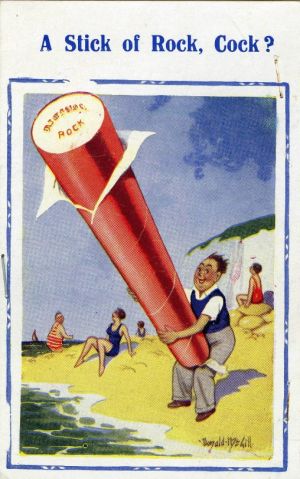Parting Shot: Michael Winner, 1935-2012 | reviews, news & interviews
Parting Shot: Michael Winner, 1935-2012
Parting Shot: Michael Winner, 1935-2012
The film director may come to be best remembered for the house and art collection he planned to bequeath to the nation

Michael Winner was always proud to call himself a film director but his filmography is notably short of quality moments.
Seven years ago, when he was 70, I found myself in Michael Winner’s bedroom. Not a privilege vouchsafed to all, and I was conscious of the honour. Edward VII, who once penetrated the same cavernous inner sanctum some years earlier, with its ring of light-giving windows, thought it one of the finest rooms in London. The king was there to have his portrait painted by the then owner, Luke Fildes, one of several Victorian painters domiciled in this quiet row of villas on the edge of Holland Park. I was there to interview Winner about his paintings.
 The house was designed by Norman Shaw, and Winner’s plan was to leave it to the nation, and with it his bulging collection of art. There was not a spare patch of bare wall in the bedroom, on the grand staircase, in the receptions, in the loos. And the projection room was lined floor-to-ceiling with photos of all the stars from the owner’s years as a film director: Winner with Brando, Winner with Welles, Winner with OJ…
The house was designed by Norman Shaw, and Winner’s plan was to leave it to the nation, and with it his bulging collection of art. There was not a spare patch of bare wall in the bedroom, on the grand staircase, in the receptions, in the loos. And the projection room was lined floor-to-ceiling with photos of all the stars from the owner’s years as a film director: Winner with Brando, Winner with Welles, Winner with OJ…
If there are two themes to Winner’s extensive collection, they are Venice – there are canal views up and down the house – and children’s literature. He collected sundry originals by Edmund Dulac, EH Shepherd and Arthur Rackham. Winner also had nearly 200 signed colour-washed illustrations by the seaside postcard artist Donald McGill (pictured below, courtesy of British Cartoon Archive, University of Kent © Donald McGill Archive), which because he somehow never found the space to show them all off, he decided to sell a few years ago.
“Only one was ever displayed,” Winner told me. “It was two girls with big bosoms. They were saying something quite funny to each other. I didn’t have anywhere to put them, so I kept putting them in a drawer and they sat in a drawer for 25 years, some of them, wrapped up in black plastic bin liners. And of an evening I'd take them out like Fagin taking out his jewellery and look at them and put them back in. It seemed to me, that’s no life for a work of art. It’s not right. If I’m not getting the full value…”
 Winner began collecting art in the early 1960s. “I used to go to the auction rooms and look over the dealers’ shoulders. And the dealer had marked his catalogue, saying £200 for a Dutch painting. I would think, well if he’s put 200 I will go 220. So the dealers hated me. You didn’t need much money in those days. I bought a Canaletto for £400 in 1963. It was a fake. They are crooks now, the auctioneers – but there they actually put on the catalogue, ‘Canaletto, a view of the Rialto Bridge, Venice.’”
Winner began collecting art in the early 1960s. “I used to go to the auction rooms and look over the dealers’ shoulders. And the dealer had marked his catalogue, saying £200 for a Dutch painting. I would think, well if he’s put 200 I will go 220. So the dealers hated me. You didn’t need much money in those days. I bought a Canaletto for £400 in 1963. It was a fake. They are crooks now, the auctioneers – but there they actually put on the catalogue, ‘Canaletto, a view of the Rialto Bridge, Venice.’”
He was a litigious collector. He successfully got his money back when Christie’s flogged him a bronze that wasn’t, as they claimed, by Reginald Frampton. “I put them on notice. I said, ‘You’re in big trouble, fellas.’ In the end, after threatening to go to court, I got the money back and bought this from Christie’s which is real.” He fondled a bronze Peter Pan that definitely is by Frampton.
Winner flicked the lights on and off as we passed through an impressive array of rooms. There were 46 of them. He liked his art to cheer him up. Hence, for example, on a patch of wall between two door jambs was a tiny watercolour by Beatrix Potter for which, without having actually seen it, he shelled out £32,000. As you’d expect of a man who trawled the auction rooms for postcard art by McGill, Winner was hardly an academic collector. A 17th-century portrait of the Countess of Abingdon frowns down on Winner from behind his desk. I asked who she was. “Fuck knows,” he said, switching off the light. “Some snotty cow who could afford Peter Lely. If that’s a real Lely.”
Explore topics
Share this article
Add comment
The future of Arts Journalism
You can stop theartsdesk.com closing!
We urgently need financing to survive. Our fundraising drive has thus far raised £49,000 but we need to reach £100,000 or we will be forced to close. Please contribute here: https://gofund.me/c3f6033d
And if you can forward this information to anyone who might assist, we’d be grateful.

Subscribe to theartsdesk.com
Thank you for continuing to read our work on theartsdesk.com. For unlimited access to every article in its entirety, including our archive of more than 15,000 pieces, we're asking for £5 per month or £40 per year. We feel it's a very good deal, and hope you do too.
To take a subscription now simply click here.
And if you're looking for that extra gift for a friend or family member, why not treat them to a theartsdesk.com gift subscription?

Comments
Who knew? Bizarre stuff. I'm
"The Nightcomers". A dreadful